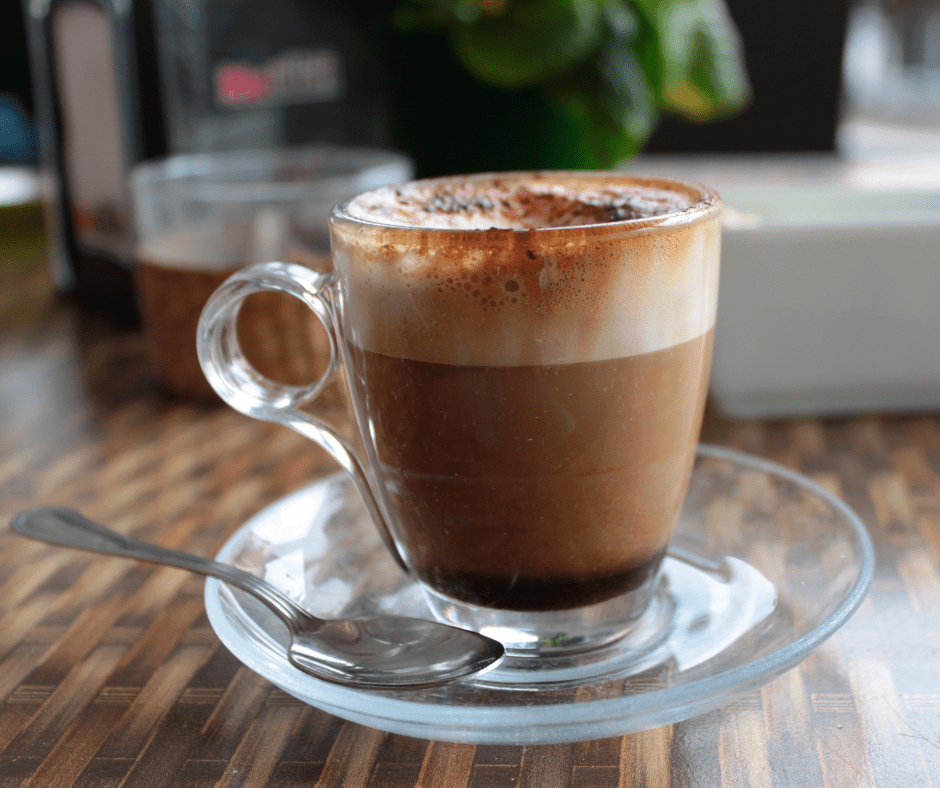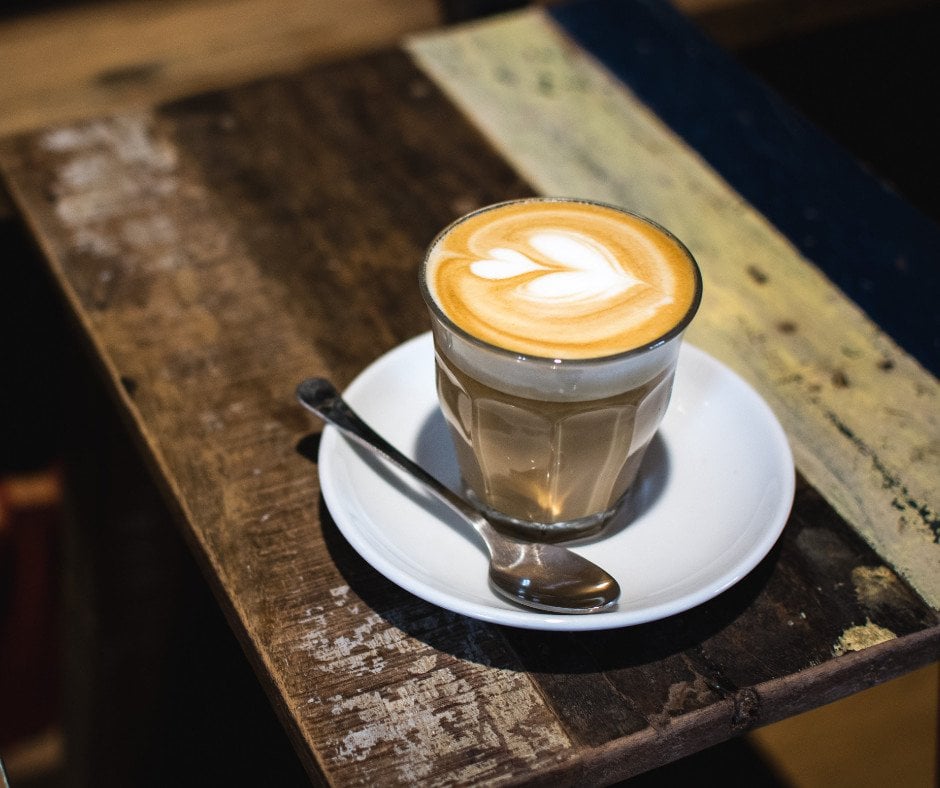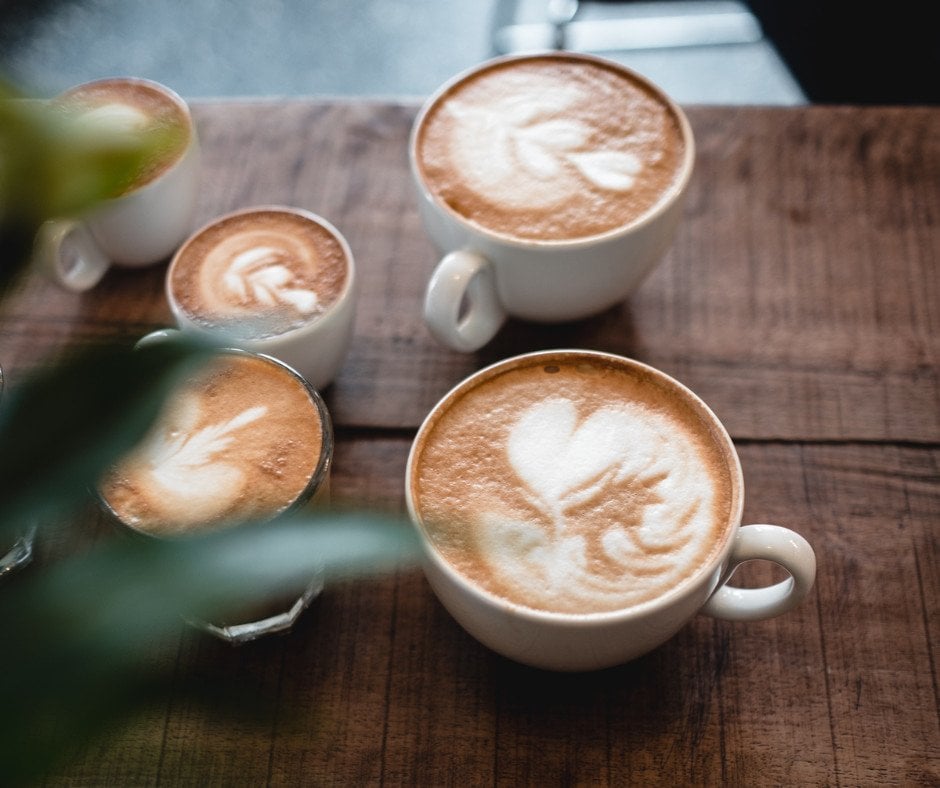Life was easy before the early 2000s when you sat in a coffee shop with friends. You scoured the handwritten menu for your favorite items to the sound of the doorbell ringing in the background. Life was easy, and the coffee menu was simple. Today, coffee shops have tons of options for coffee from around the world. It can be challenging to know each drink, but worry not because we’re here to help.
Keep reading, and we’ll tell you about cortado and cappuccino, two similar yet different coffee drinks.
Table of Contents
Cappuccino: A Frothy Milk Coffee

Cappuccino is a mix of an espresso shot, steamed milk, and milk foam. It’s a staple in coffee shops everywhere!
The drink has a smooth, lightly sweet taste -even without sugar- and a creamy, silky texture from the steamed milk and microfoam. The espresso in the drink adds strength and balance, combining exquisitely with the milk’s sweetness.
The final result is a strong, slightly sweet, and creamy cup of coffee. A cup of cappuccino usually is 5 to 6 ounces, which allows for a tasty amount of espresso, milk, and foam.
Cortado: A Stronger and Richer Blend

Cortado can be a dash of milk on top of an espresso shot. The drink is bolder than the cappuccino because the espresso flavor is far more intense. Adding just a little milk to the espresso cuts through the bitterness of the brew while preserving its rich flavor and aroma.
A cortado cup usually has 3 to 4 ounces of coffee, making it perfect for breakfast and lunch. It is much lighter on the stomach, which is why it suits daytime meals so well.
Want to learn more about cortado? Read our complete article about cortado.
Cortado vs Cappucino

Origin
You can find a cup of cortado and cappuccino in the same coffee shop, but the drinks have very different histories. Cappuccino can be traced back to Italy, where it was drunk for decades before it was introduced to the rest of the world. Named after the Capuchin friars— because its color resembled the Capuchin robe—the drink was traditionally made with frothed milk and espresso. Actually, some historians trace the origins of cappuccino back to the kapuziner, an Austrian coffee drink.
Today though, baristas mix steamed milk and microfoam together to improve the texture and taste of the beverage.
The cortado, on the other hand, hails from Spain. In Spanish, “cortado” means “to cut.” The drink was named cortado because a milk splash reduces -or cuts through- the bitterness of coffee.
The cortado and the cappuccino have rich histories and hail from different backgrounds. One would think they have nothing similar to offer, except they are both born out of the same espresso shots and are milk-based coffees.
Size and Construction
Since both drinks use the same amount of espresso, their construction makes all the difference. The cappuccino is a larger cup of coffee having 5 to 6 ounces. It has a 1:1:1 ratio of espresso, steamed milk, and microfoam. Usually, a cappuccino contains a single espresso shot (around 2 ounces). Still, double espressos are becoming increasingly popular at cafés and among coffee drinkers.
Unlike a cappuccino, a cortado does not include milk foam and is only 3 to 4 ounces per serving. In Spain, it has a splash of milk over an espresso shot. However, today, in coffee houses around the world, it is made by adding espresso and steamed milk in either a 1:2 or 1: 3 ratio of espresso to milk. The exact ratio depends on the coffee shop and the barista’s recipe.
While both drinks have an average number of ounces per serving, there isn’t any standard for coffee chains worldwide. International chains like Starbucks and Dunkin Donuts have their size charts, and you can order as much or as little coffee as you want.
Small coffee shops, though, can make espressos and cappuccinos the same size: 4 and 6 ounces of fluid.
Body, Milk, and Texture
Out of these two coffees, the cappuccino is frothier and heavier. The layer of microfoam on top and the amount of steamed milk in the coffee makes it heavy and thick.
While a latte and cortado are mainly differentiated by taste, a cappuccino is distinctly recognizable because of the thick layer of foam on the top. This foam adds an exquisite light and frothy feel to every sip, which is immediately cut through by the strong espresso. On the other hand, the cortado is richer, and while not as frothy as the cappuccino, it still has a nice creaminess from the steamed milk. By blending texture and flavor, cappuccinos have made themselves one of the most consumed coffee beverages in the world.
Traditionally, cortado did not come with milk foam on top. However, baristas today have started adding a little layer to the top of the coffee for visual purposes. Typically, this is about 0.5cm of milk foam right on the top.
Finally, although traditional cappuccinos and cortado blend the sweetness of milk and the strength of coffee, drinks can come with various added flavors and toppings. This has opened a new world of choices for our average coffee drinker. However, the cappuccino and cortado themselves are simple drinks. They are both simple milk coffees at their heart, one with a rich creaminess and the other with a delicate frothiness.
Conclusion
Although the cortado and cappuccino are both made from an espresso shot, their structure and the ratio of milk to coffee make them two very different drinks. If you’re a milk-coffee drinker, both drinks might work for you. However, they have distinct flavors and textures, so you’ll have to choose one.
Which is better? Only you can decide that. We recommend you try them both and decide which one you enjoy more. After all, what is there to life if not good coffee?


